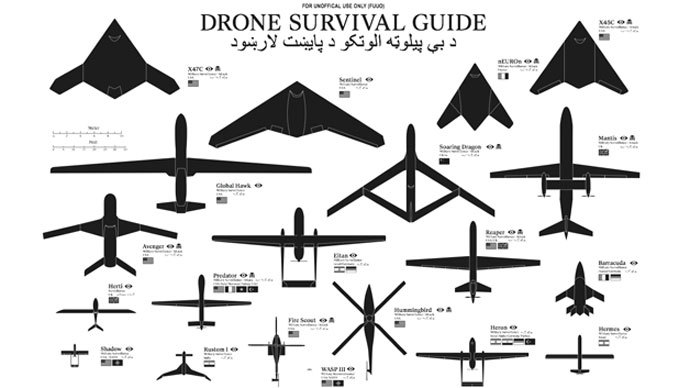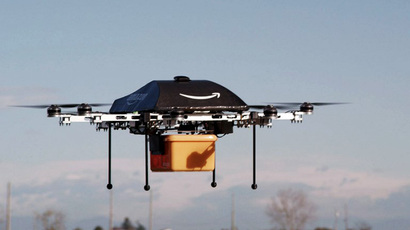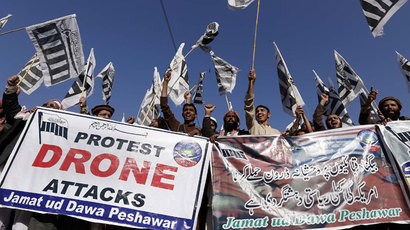Drone-spotting: Survival guide informs on new breed of aerial predators

A Drone Survival Guide with hints and tips on how to thwart the “robotic birds” has been published on the internet. With over 30,000 drones expected to be flying over the US by 2030, the Guide urges readers to familiarize themselves with the craft.
In light of the growing number of drones, the Guide advises a number of techniques to evade and scramble drones. The document is available online and has been translated into 17 different languages.
“Our ancestors could spot natural predators from far by their silhouettes. Are we equally aware of the predators in the present-day?” writes the Guide.
It contains the silhouettes and measurements of all of the most widely-used drones, from the ‘Killer Bee’ to ‘The Sentinel’ as well as information on where they are currently operational. It goes on to detail ways you can hide from a drone.
“Most drones are equipped with night vision, and/or infrared vision cameras, so-called FLIR sensors. These can see human heat signatures from far away, day or night. However there are ways to hide from drones.”
Among the tactics it advices for eluding the aerial craft are: hiding “in thick forests,” wearing space blankets to confuse heat sensors, not using wireless communication, and the use of mannequins or human-sized dolls as decoys.
“Wait for bad weather. Drones cannot operate in high winds, smoke, rainstorms or heavy weather conditions.”

As well as avoidance strategies to escape from the craft, the document also gives advice on how to hack into a drone’s systems. The Guide gives the assurance that as long as a drone’s communications are not encrypted then they can be hacked. It describes how to intercept and interfere with the workings of a drone and also details a process called “spoofing”.
“Small, portable GPS transmitters can send fake GPS signals and disrupt the Drones navigation systems. This can be used, for example, to steer drones into self-destruction flight paths or even hijack them and land them on a runway.”
The US’ use of drones for surveillance as well as military strikes has drawn global recognition. Last week the Yemeni parliament passed an anti-drone motion because of the civilian lives lost in the US strikes on Al-Qaeda militants in the country. Pakistan has also condemned the US for its use of the craft, decrying the strikes as an affront to its sovereignty.
Moreover, the Obama Administration has come into the firing line for increasing the amount of drones operating in American air space. By 2030 The Federal Aviation Administration (FAA) has estimated that around 30,000 craft will be operational in the US.
In spite of assurances of their safety there have been a number of incidents where drones have lost control and crashed. In November of this year two drones came down in two weeks with no explanation as to why they might have malfunctioned.
The first crash on November 12 grounded all drone flights in Central New York, while the second – on November 17 - saw one of the unmanned craft veer out of control and crash into a guided missile cruiser off the coast of Southern California, injuring two soldiers.















